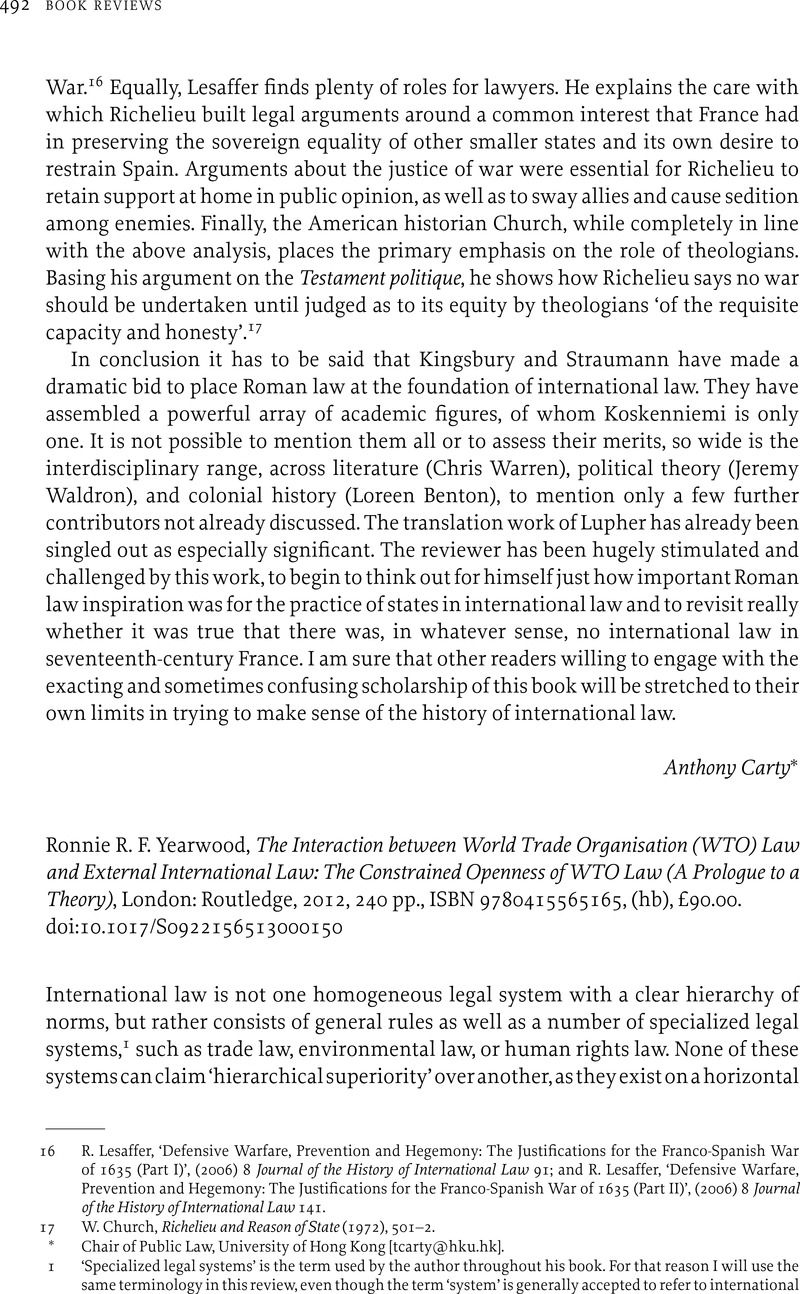No CrossRef data available.
Article contents
Ronnie R. F. Yearwood, The Interaction between World Trade Organisation (WTO) Law and External International Law: The Constrained Openness of WTO Law (A Prologue to a Theory), London: Routledge, 2012, 240 pp., ISBN 9780415565165, (hb), £90.00.
Published online by Cambridge University Press: 03 May 2013
Abstract

- Type
- BOOK REVIEWS
- Information
- Copyright
- Copyright © Foundation of the Leiden Journal of International Law 2013
References
1 ‘Specialized legal systems’ is the term used by the author throughout his book. For that reason I will use the same terminology in this review, even though the term ‘system’ is generally accepted to refer to international law as a whole. The International Law Commission in its Report on Fragmentation uses in this regard the term ‘regime’ or ‘special law’.
2 See also the ‘Report of the Study Group of the International Law Commission: Fragmentation of International Law: Difficulties Arising from the Diversification and Expansion of International Law’, the Erik Castren Institute Research Reports 21/2007.
3 See, e.g., Jackson, J., ‘Global Economics and International Economic Law’, (1998) 1 JIEL 1CrossRefGoogle Scholar.
4 H. L. A. Hart, The Concept of Law (1961).
5 Cheyne, I., ‘Gateways to the Precautionary Principle in WTO Law’, (2007) 19 Journal of Environmental Law 1CrossRefGoogle Scholar.
6 See Teubner, G., ‘How the Law Thinks: Toward a Constructivist Epistemology of Law’, (1989) 23 Law and Society Review 727CrossRefGoogle Scholar; Black, J., ‘Constitutionalising Self-Regulation’, (1996) 59 Modern Law Review 24CrossRefGoogle Scholar.




